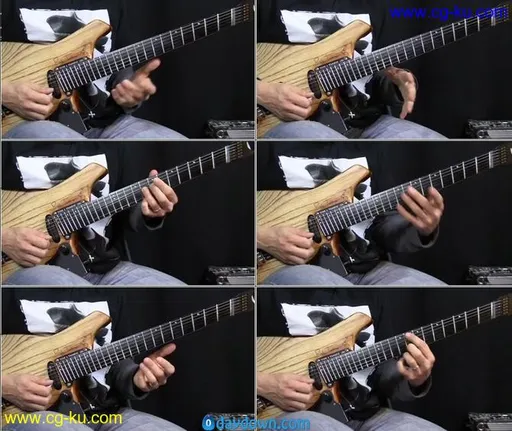Video: .MP4, AVC, 640x360, 30 fps | Audio: English, AAC, 44.1 KHz, 2 Ch | Duration: 3h 7m | 1.03 GB
Powerful Techniques For Mode Recognition and Improvisation
TrueFire Foundry courses are independently produced courses presented by a hand-picked selection of top-notch artists and educators from around the world. Filmed in the educator’s own studio, Foundry courses bring fresh educational concepts and very effective teaching methodologies to TrueFire Students. Chris Buono’s Foundry course, Modal Mother Lode: Alpha will impart powerful ear training and modal techniques for improvisation.
Hello I'm Chris Buono — welcome to my TrueFire Foundry course, Modal Mother Lode, which I produced in my own studio.
Modal Mother Lode | Alpha kicks off my three-part Modal Mother Lode Course series with a unique look into eight essential modes that share a common bond - a major 3rd. Starting with the mother of all modes Ionian AKA the major scale youll dig into Mixolydian, Lydian, Lydian Dominant, Lydian Augmented, Ionian #5, Harmonic Major and Phrygian Dominant. What makes this course so unique is my time-tested multi-faceted approach to modal study, which is rooted in parallel comparison and propelled by application.
All three courses will be structured in the same way. You'll have eight sections of intense melodic and harmonic playing as you make informed comparisons of the modes sound against each other. Each mode will be presented through a scale fingering concept I call "one octave cells" that I will show you in the section’s introduction video. There I will also hip you to the mode's degree formula, its inherent sounds and its possible applications. Once you have the one octave cell under your fingers it will be time for you to go in deep and play.
Just like the three courses mirror each other in structure so do the section’s lessons and their content. Each section features three style-based applications that you'll be shedding in preparation of your video submissions that directly use the one octave cell and its extenders.
You'll have an 8-bar rock lick, a 16-bar funk vamp and a 12-bar blues solo to investigate these modal sounds. Everything you'll play will make use of a parallel root - in this case C. Everything you play will be based off the same three ideas this is about where that record scratch sound comes in.
That's right: Everything you'll play is based off the same three ideas. Same lick, same vamp, same 12-bar solo. Think of these three style-based ideas as templates based off the same root, just within different modal environments. That's what parallel comparison is all about and that's how you truly get the most accurate picture as to what a mode (or any scale for that matter) is all about. If you're thinking there's no way Harmonic Major can pass for a blues soloing vehicle, just wait!
This method worked wonders for every aspect of how I deal with modes and now it's time for it to work for you — come take the journey!
NOTE! Chris Buono organized the course into 8 weekly sections for those students that prefer to have a specified regimen of material across a specified time schedule. However, for those students who prefer to work at their own pace, or even skip around you are certainly encouraged to approach the course in that way as well.


发布日期: 2019-08-08